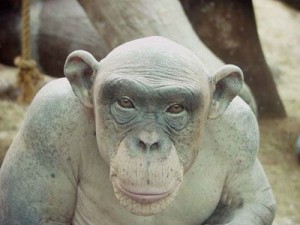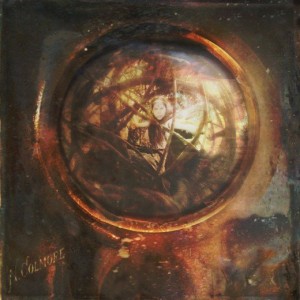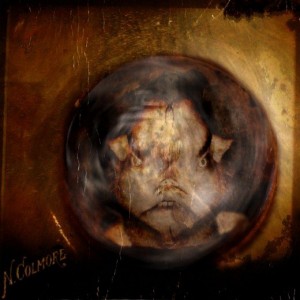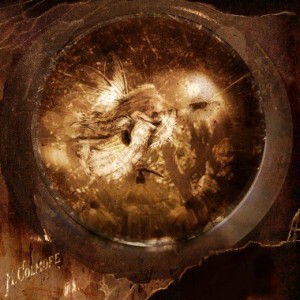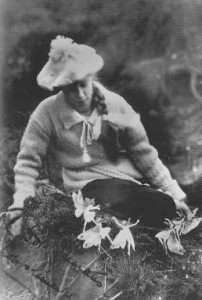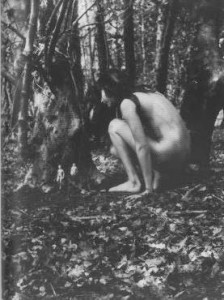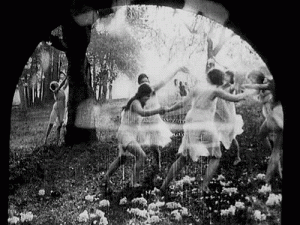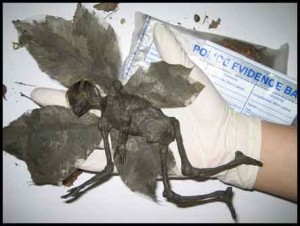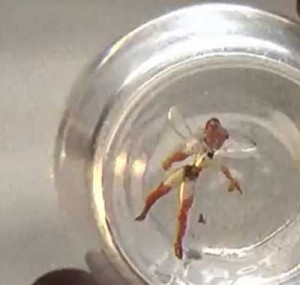Fake Fairies February 21, 2012
Author: Beach Combing | in : Contemporary, Modern , trackback***Dedicated to Invisible who sent in two of these fakes***
Beachcombing apologies because he does normally try and limit his fairy nonsense to a post a week. But this was just too good to miss. He stumbled across a curious reference in the works of Robert Southey (obit 1843). While wandering through Bristol Southey saw a shaved bear (in a check waistcoat) being exhibited as ‘an Ethiopian savage’. Now Beach has to say that he doesn’t normal think of tweed when he thinks of Ethiopia, but anyway… More interesting for present purposes was ‘a shaved monkey shown for a fairy’. Southey does not, unfortunately, elaborate as to whether there were wings attached. The picture above should give some idea of the potential that does not seem that great… But Bristol has always been an unusual city.
Beach thought that he would throw together three or four fairy fakes from the last two hundred years, hoping that readers will be able to increase the number. drbeachcombing AT yahoo DOT com This blog has already parked for a day in Cottingley. But what about the spectobarathrum, a late nineteenth century machine capable of ‘parting the veil of Faery’ and producing ‘fatagravures’. The pictures are stunning and strangely sinister:
Apparently the inventor, Neville Collmore, actually lectured with these slides: oh to have been there in and among the theosophists and the circus folk!
There is, of course, a long history of fairy photographs, though none original as these fatagravures. A sub-Cottingley example was Dorothy Inman’s copy cat fairy dancers. Taken from the same book? Hat pins and scissors and a breath of wind can do extraordinary things.
There is also this rather disturbing picture said to have been taken in a witch’s coven in Devon or Cornwall. It is not easy to date on present evidence. Beach is guessing post war. Follow the gaze for the little people.
Then while not strictly ‘fakes’ there are a series of late nineteenth, early twentieth century pictures of fairy gadding about: that remind us of the unusual charge that fairies were taking on. What is the girl doing to the tree trunk? [Click for motion]
In more recent times, 2007, magician Dan Baines created a fairy mummy that was ‘discovered’ for an April Fool’s Joke and then sold on ebay for a bargain 280 pounds sterling. Dan will you make another one?
Then there are also some recent treasures, what about this masterpiece from Mexico. It seems that it was caught in the barrio and that the man with the butterfly net started charging to show it to his neighbours after dipping his fairy godmother in formaldehyde. Poor Tinkerbell! Personally, it looks to Beachcombing like something that would fall out of his breakfast cereal box and, in fact, the origins of this particular fake have now been identified.
Oh and while Beach is on the subject (kind of) what does the following mean? In the Leverian Museum were deposited ‘Orbicular sparry bodies, commonly called fairies’ money, from the banks of the Tyne, Northumberland’. Ramon, a character in the play The Fatal Dowry, 1632, says ‘But not a word of it, ‘t is fairies’ treasure; Which but reveal’d, brings on the babbler’s mine.’
Orbicular sparry bodies?!?
***
22 Feb 2012: Mike G. writes in on Orbicular sparry bodies. ‘I rather think that what is meant are geodes – or “concave sparry balls” as “The Natural History of Northamptonshire” calls them, with
many a long S. See link (scroll to bottom of page). Not wholly unrelated: fossil crinoid stalk sections were called “fairy money”, at least the round ones were; pentagonal ones were “star stones”. Invisible is also on the trail and has come to similar conclusions: Here’s an example of a ‘sparry’ crystal so I assume that orbicular sparry bodies are round formations of some mineral with protruding crystals, which sounds like a glittering hedgehog. Or possibly they are geodes? In any case, I thought fairy money would turn to dried leaves if you didn’t spit on it or turn your pockets inside out or something like that… There is also a belief that fairy money wll be good as long as you don’t mention it. Is that the meaning of: But not a word of it, ‘t is fairies’ treasure; Which but reveal’d, brings on the babbler’s mine.’ ?’I went looking for Tyne geodes and found instead this site with some interesting folk belief artifacts. Next up is Kithra who has been squinting at the ‘Cornish’ fairy photograph: ‘Someone may already have emailed you about this, but I strongly suspect that one of the pictures is a picture from the famous surrealist Doc Shiels, taken in the 1970s. He took many photos of a ‘witches coven’ that included his daughter, when he lived here in Cornwall. He also played a large part in our local Owlman and Morgwar legends when they were reported seen again during that decade. And, he held a coven to try and raise the sea monster. I found a very similar photo here. Cornish Witches – The Coven of Tony ‘Doc’ Shiels in ritual in woods below Mawnan Old Curch, most probably a ritual associated with ‘The Owl Man of Mawnan’. On the far right is Cait Sidhe. Above: Another photograph of the Coven.’ Finally, the great Mike Dash writes in: ‘My recollection – it’s a strong one but I hope I am right about it – is that it contains an account, plus photos, of a case from East Prussia in the late 1920s. I read it maybe 30 years ago, so little detail remains in my memory. The images seemed more gnomelike than fairy per se, and I am sure it was a shameful rip-off of Cottingley, but I don’t recall seeing the photos reproduced anywhere else.’ Then Mike backs up Kithra’s point ‘The only person I know of who shot photos of naked (“skyclad”) girls in “witches’ covens” in Devon and Cornwall is Doc Shiels, the 1970s “Wizard of the West” who faked several sea serpent and Loch Ness photos. The people he shot were his own daughters and his wife – yes, odd. I wouldn’t mind betting he had something to do with the photo you ran the other day. Mark Chorvinsky did a memorable demolition of him over two issues of Strange Magazine.‘ Thanks Mike and Mike, Kithra and Invisible!!
25/2/2012: WKJ writes: ‘As a geologist I have to put in my 2 cents (pun intended) on the “fairy money”. In my area (Louisville, Ky) and in much of the eastern US we have Devonian age organic rich black shales that formed in a anoxic (low oxygen) environment sometimes favoring the deposition and growth of various minerals, the most pertinent being FeS2, known as pyrite (or marcasite). Better known as fools gold. In some places the shales have various sized flattened pyrites that are, locally at least, called pyrite (or marcasite) dollars or medallions (found a few photos online under those names). “Orbicular” too sounds more flattened to me, and more like money, rather than more spherical as a geode can be. The “sparry” part would well fit many of the “dollars” I’ve seen too. They occur in older and younger age anoxic shales as well , if Northumberland has anoxic shales, “pyrite dollars” might = “fairy money”. Thanks WKJ!!!

